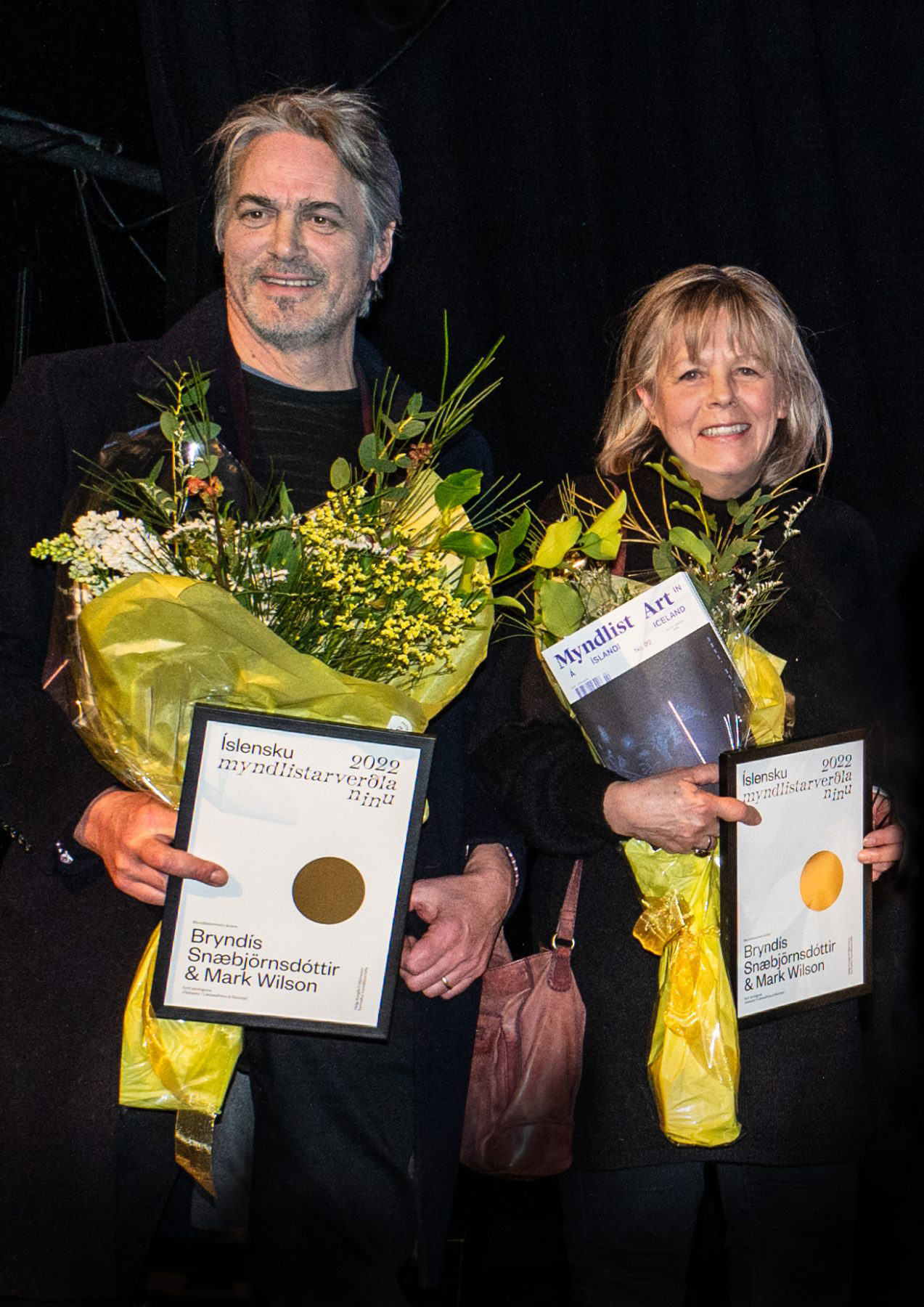Visitations was exhibited from September 25th 2021 to January 16th 2022 at Akureyri Art Museum, Akureyri, north Iceland and was curated by Æsa Sigurjónsdóttir.
Glashuset, Gothenburg, Sweden, March – April 2009
Research Fellowship July-August-September 2002
In 2002 Snæbjörnsdóttir/Wilson were offered one of the first Arts Council England International Fellowship Awards to Australia.

Our host institutions were the Victorian College of the Arts in Melbourne and the Ruskin School of Art and Design, Oxford University. We topped and tailed a three-month residency in Australia with two week-long sessions in Oxford.
At the Centre for Ideas at the VCA we were looked after by Karen Lyons and Nikos Papastergiadis, (who’d recently moved on, but nevertheless was actively involved in ensuring the smooth running of the residency)
Both the preliminary visit and the wind-up visit to Oxford were hugely useful, enabling us amongst other things, to meet keepers and curators in the Oxford University Museum who helped us find our way through those parts of the collections of particular interest to us. We were enormously well looked after and entertained there by Paul Bonaventura who throughout the fellowship was enormously helpful.

Whilst we were in Australia we quickly identified what it was that we wanted to research, this being the prevailing fanatacism and the historical contention surrounding the Thylacine or Tasmanian wolf. Being in the area, we were able to set up meetings and interviews with specialists in Melbourne and in Tasmania. These included an animal behaviourist and commentator on the history and philosophy of science, a parks & wildlife manager, a museum curator, an environmentalist partnership, a veteran trapper, a contemporary ‘hunter’ of the animal, a geneticist, all of whom are engaged and driven by aspects and possibilities pertaining to this believed-to-be extinct creature.

This period of intense research was made possible to us by the International Fellowship. Not only were we given travel costs to get us there and to travel whilst in Australia but the association with the host organisations meant that from the outset there was a sense of support and connection both personally and institutionally.
We found that the Fellowship enabled us to develop and extend growing tendencies within our practice towards more collaborative and process-based outcomes. We enjoyed identifying other interested parties and enlisting their cooperation, knowledge and insights, all of which remain theirs within the structure of the work, but which resonate distinctly when put in what is a ‘collective’ context.
Because of this we gained confidence in this direction and it undoubtedly assisted in the evolution of our practice. In addition it further bolstered our belief that collaboration and the pooling of knowledge and experience is enormously beneficial in the processes of observation and discovery and consequentially in making art.

The previous year (2001) we took a residency in Greenland funded by NIFCA. This was a country we had planned to visit for a number of years in relation to work and Australia, although a different continent and at the opposite side of the Globe, we felt shares many characteristics with areas we have visited in the sub-polar north.
We were conscious of the similarly sparse and predominantly coastal distribution of a population, marginalized by an inland desert.
We were aware that these two ancient landmasses are the largest islands on earth. Both too have an extant aboriginal population trying to maintain a subsistence culture on the one hand whilst on the other, negotiating a living relationship with settlers.
As was the case in Greenland, we were keen to consider the symbolic functions of particular animals that inhabit and have inhabited the Australian bush.
Without wishing to anticipate any particular outcome of the residency we were conscious that certain environments mobilise and sustain the respect of those who live there whilst others, generally from more temperate zones, can engender an indifference in their inhabitants to nature and to life, (particularly non-human life) in general.
